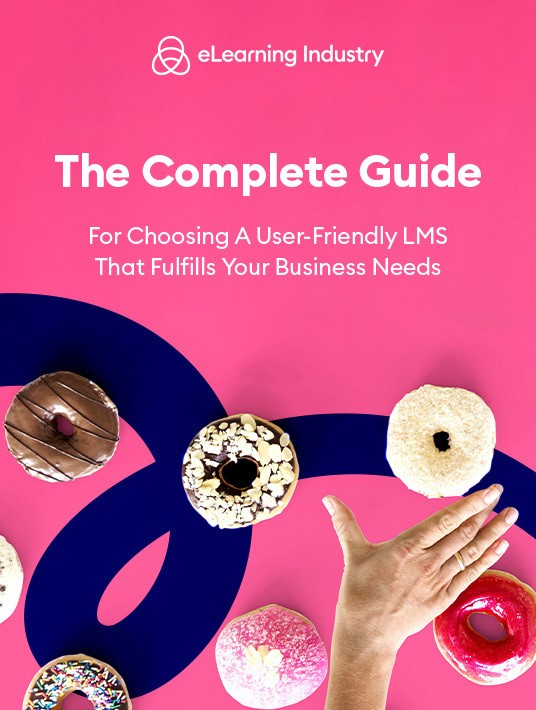How To Improve User Experience By Avoiding 7 LMS Navigability Issues
Navigability, or actually lack thereof, is one of the most common usability complaints among LMS owners. With every click, users encounter new obstacles that stand between them and achieving their training objectives, while your L&D team cannot even access reports or modify online training content without having to resolve a glitch or two. In fact, LMS navigability issues are so common that users have grown accustomed to the fact that they’ll have to deal with confusing controls or User Interface flaws. It doesn’t have to be this way, though. Below are the top 7 LMS navigability issues that a new, user-friendly system can help you avoid.

1. Disorganized User Interface
The User Interface lacks a centralized theme and cohesiveness. It’s also difficult to locate functions within the platform, such as content management or reporting dashboard. In the case of corporate learners, the User Interface makes it difficult for them to access relevant online training materials, or it doesn’t highlight online training activities or modules that may be beneficial to them based on their job duties or performance gaps. This is due to the fact that your admins are unable to quickly assign roles or personalized training recommendations. Once again, it all boils down to a disorganized User Interface that is anything but user-centered. To find a system that offers the ideal User Interface, consider the needs and preferences of your team. Do they prefer a single-page architecture that offers a general overview of the entire LMS platform? Would they fare better with tabs that allow easy access to separate functions?
2. Lack Of Search Functionality
Even if the User Interface is intuitive, it may still be challenging to find exactly what you’re looking for. Which is why it’s crucial for your next LMS to have a built-in search functionality. Admins can quickly locate user information, performance reports, and online training content. By typing in a keyword or selecting a tag, they can search across the entire system in a fraction of the time. Just as your corporate learners can rapidly find online training modules, activities, and support resources to improve their job performance.
3. Unintuitive Dashboards
The quintessential trait of an intuitive LMS dashboard is that it instinctively knows what you need when you need it. It’s as though the software developer sat right next to you and studied your workflow, then designed a system that makes it easy for you to perform everyday actions with the click of a button. For example, the dashboard features cards or pins that allow you to continually monitor online training initiatives or quickly assign tasks. A well-designed dashboard gives the LMS an organic flow that seems custom-built for your team.
4. Inability To Track Or Backtrack Work Progress
The beauty of designing online training experiences in an LMS is that you can correct mistakes and retrace your steps. Gone are the days of having to reprint countless training manuals because of grammatical errors, or to update information. However, you still need a system with no LMS navigability issues that makes it easy to track, and backtrack, your progress. This usually involves breadcrumbs, which monitor every step you make in the system and enable you to undo actions, such as go back to the previous step and modify the online training content.
5. Inconsistent Navigation Controls
The navigation controls don’t align with a specific theme or are found in different locations within the User Interface. As a result, users simply don’t know where to locate relevant pages or functions to carry out their job duties. For example, the "Awards" or "Evaluation" icons suddenly shift locations when you click on the next page instead of remaining static. It may also be a case of unfamiliar navigation controls that are difficult to decipher or aren’t clearly labeled.
6. Inability To Quickly Switch Between LMS Elements/Pages
To prevent LMS navigability issues, some platforms now feature secondary navigation controls. This allows you to quickly switch between LMS elements or pages without returning to the main dashboard. For example, you can quickly toggle between various group reports that relate to different departments or online training courses, or navigate from the course syllabus page to the enrollment screen to assign the online training course to corporate learners who meet the criteria.
7. Coding Bugs That Require IT Expertise
A bug-free User Experience is one of the benefits of owning a full-service LMS, as opposed to an open source platform. However, there are still some platforms offering the "complete package", which still require IT expertise. Glitches and coding bugs call for programming know-how to iron out the LMS navigability issues and improve the User Experience. The key is to find an LMS that offers the support you need to maintain the tool and maximize its usability. You shouldn’t have to spend hours troubleshooting bugs in the middle of your design/development project. If there are tech hurdles, the LMS vendor should be on hand to offer assistance and help you navigate the challenges. At the very least, they must be able to provide you with online training tutorials, FAQs, and forums.
Your team shouldn’t have to deal with these LMS navigability issues in order to use the LMS to fulfill their job duties. Developers/graphic designers need a user-friendly LMS to create and deploy online training content with ease, while admins need to track training objectives and individual performance gaps without stepping into the role of IT support. Likewise, every member of your audience must have the opportunity to access online training materials when and where they need them.
Does your current LMS pass the test, or is it time to look for a new system that can deliver a better User Experience? Download our free eBook The Complete Guide For Choosing A User-Friendly LMS That Fulfills Your Business Needs to learn everything you need to know to find a well designed and usable LMS that fulfills your business needs. It also features tips to user ratings and reviews to find the ideal system, plus insider secrets to invest in an LMS that offers the best LMS User Experience.







